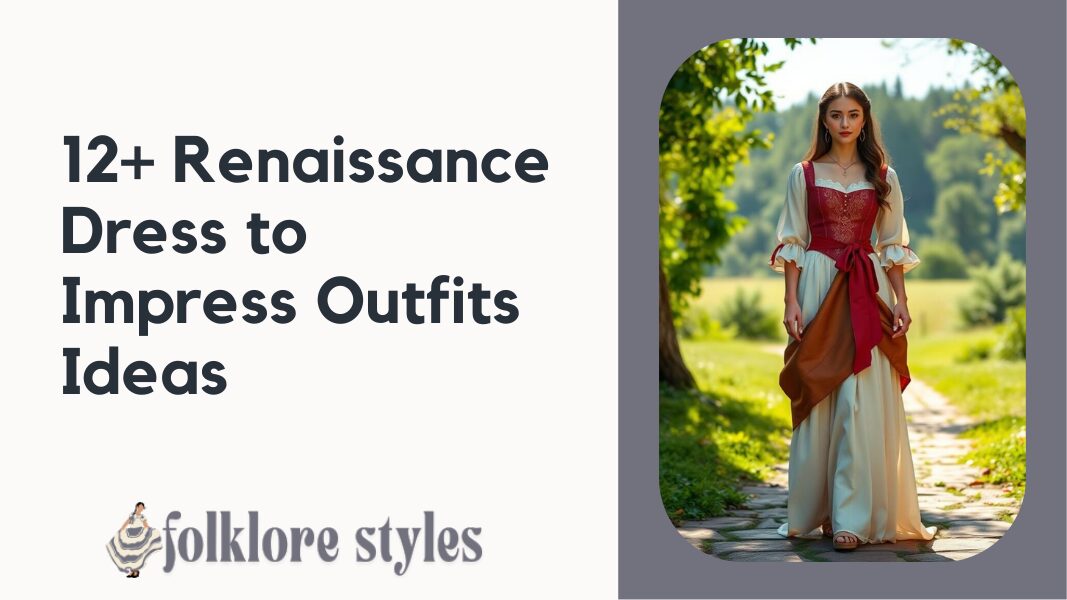In Europe, the Renaissance era, which lasted from the 14th to the 17th century, was a time of great growth in terms of both culture and knowledge. During this time, classical learning, originating in ancient Greece and Rome, experienced a rebirth following the Middle Ages.
During the Renaissance, clothing reflected the richness of this culture, both in terms of luxury and symbolic significance. This list of 13 Renaissance Dress to Impress Outfits Ideas will transport you back in time and make you feel like a princess.
The Court Musician
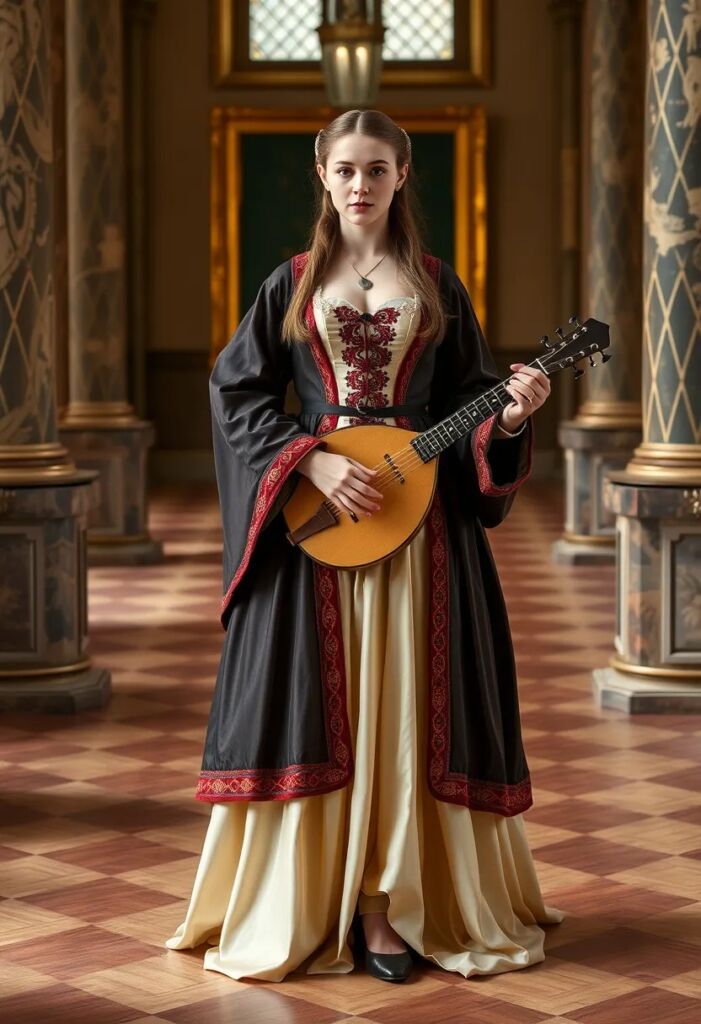
Playing an instrument would have been easier for the court musician in a comfortable, stylish gown that allowed freedom of movement. The gown should be simple in design, perhaps with a little embroidery around the collar and cuffs. Fabrics such as silk or fine wool should be soft and the colors should be soft.
Authenticate your role as a court musician by playing a small instrument, like a lute or viol. If you want to make your outfit more authentic, you can carry a small music book or sheet music.
The Royal Healer
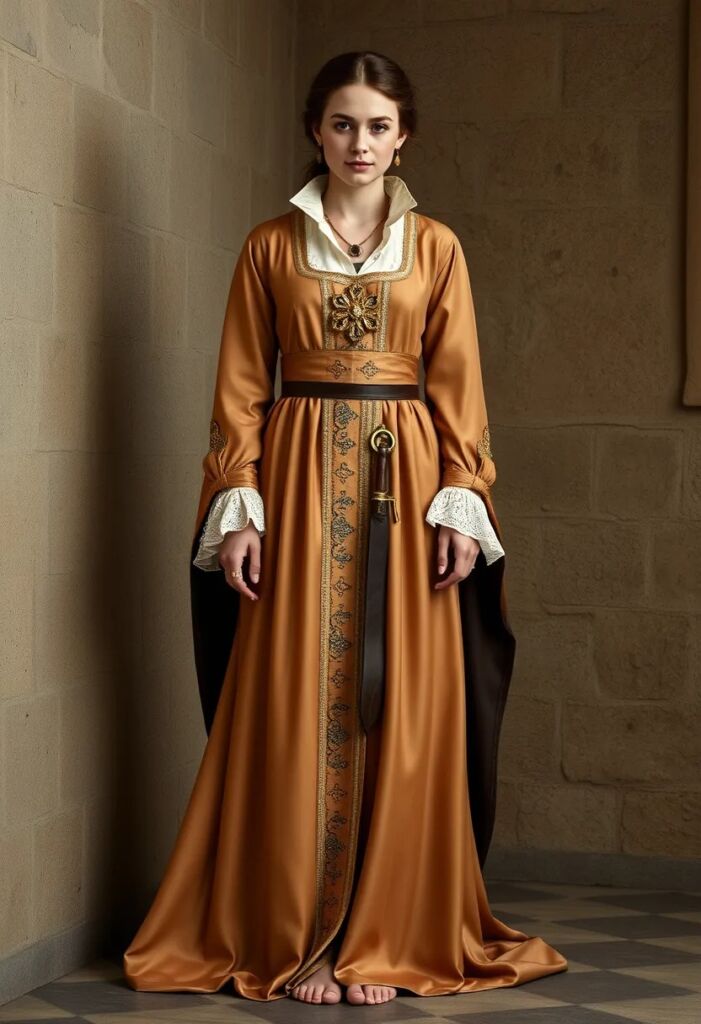
A dignified and practical gown would have been worn by the Royal Healer, a position of great respect and responsibility. An elegant gown with a high collar and long sleeves, made of sturdy materials, would be suitable. A small medical kit or herbal pouch should be the only accessories, with muted colors and minimal accessories.
You may want to include a small pouch or bag with herbs and a few medical tools, such as a small knife or bottle. You will be able to authenticate your role with these items, which would have been essential for a Royal Healer.
The Royal Duchess
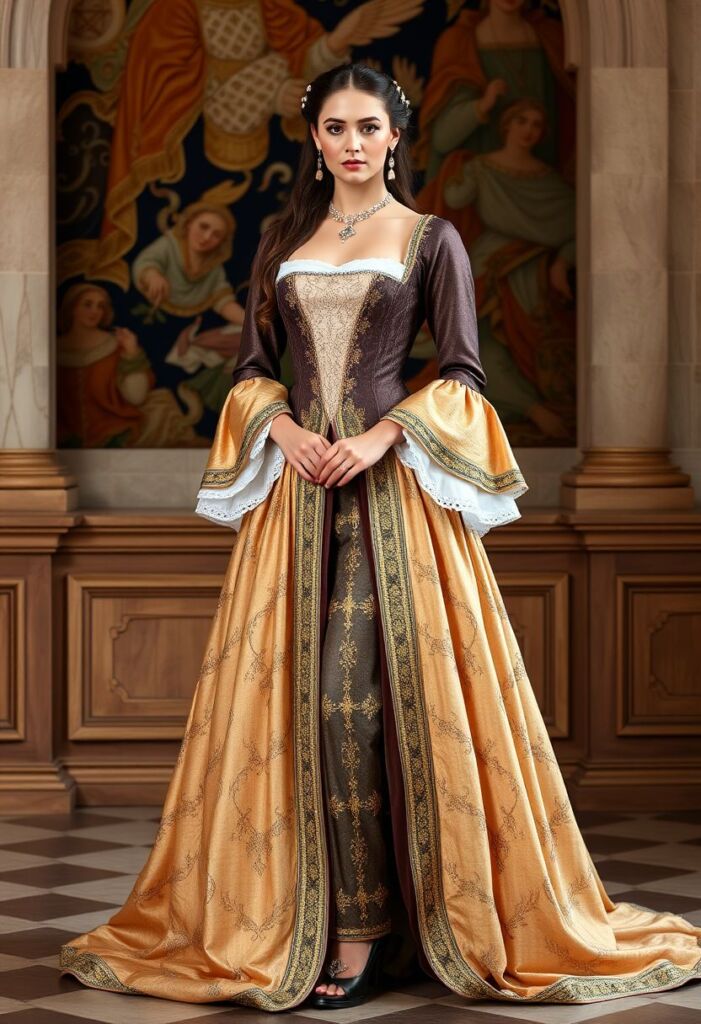
Put yourself in the shoes of a duchess at the court of a Renaissance monarch. Embroidery in gold and silver threads should grace your gown made from the finest brocades and velvets. In this outfit, the skirt will be full and there may be a train, while the bodice will be tight-fitting, emphasizing the lady’s small waist. You can complete the look by wearing a high collar and bell sleeves.
Adding a jewelled belt or booklet can give your outfit an authentic look. In addition to adding opulence to your outfit, these accessories represent the love of adornment of the Renaissance era.
The Knight’s Consort
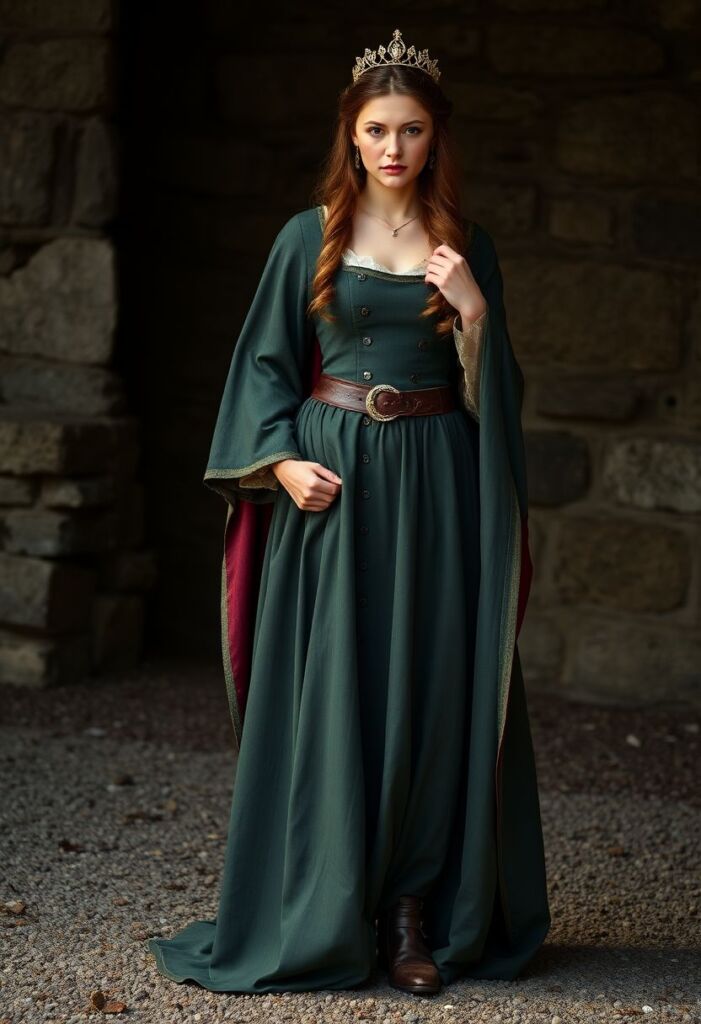
Think of a gown that is both elegant and practical for those who wish to portray a knight’s consort. The fabric should be sturdy but fine, such as wool or linen, and the colours should be rich and muted, like forest greens and dark burgundies. For an air of mystery and grace, a belt with a metal buckle can be worn along with a cloak that can be thrown over one shoulder.
You can enhance your hairstyle by adding a small, delicate crown or tiara. Furthermore, this will help to keep your hair in place throughout the day while adding an authentic touch to your ensemble.
The Merchant’s Wife
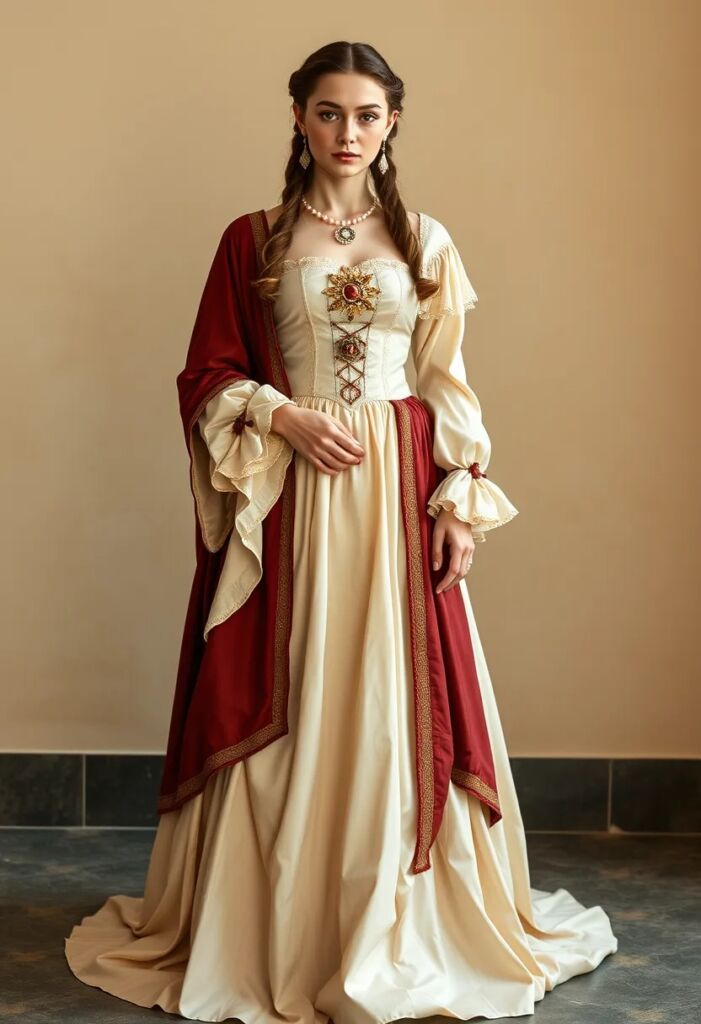
At the height of the Renaissance, the merchant class was gaining prominence, and their wives frequently wore elegant yet practical clothing. You should choose a gown with a fitted bodice and a full skirt that reaches the ankles. Long sleeves and possibly detachable sleeves are ideal, and cotton or silk fabric can be used.
Invest in a jewelled brooch or a string of pearls to add an air of opulence. Wearing these was considered a symbol of wealth and success for the merchant class.
The Young Courtier
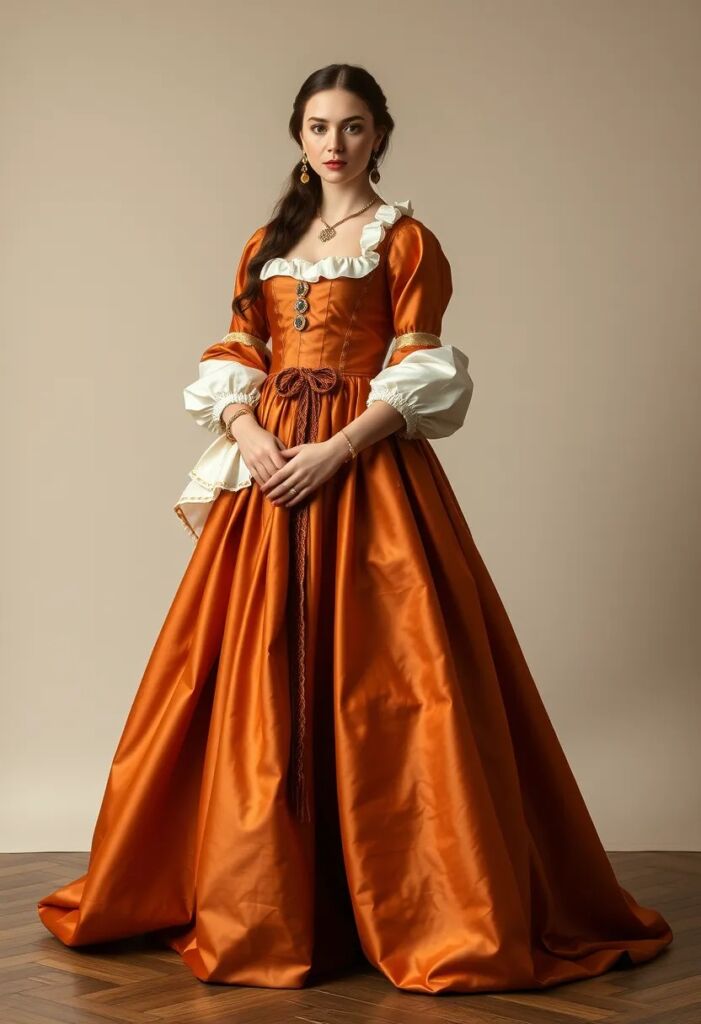
The youthful energy and innovation of renaissance courtiers were often evident in the vibrant and playful attire worn by their young companions. A gown with a full skirt, a fitted bodice, and a ruffled collar would be a good example. There should be bright colors in the dress, and the fabric should be of high quality
If you want to complete your look, wear a delicate headpiece or girdle with jewels. A touch of opulence was added to the outfit with these accessories, which were common among young courtiers.
The Art of the Court
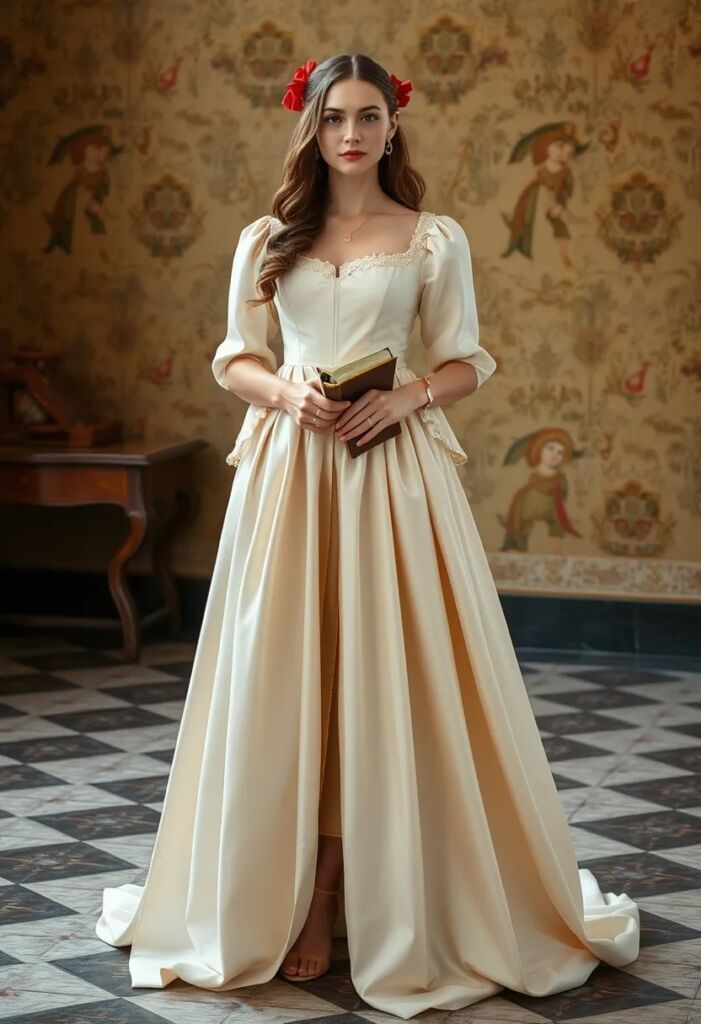
Consider wearing an outfit that represents the creative spirit of the Renaissance when channeling an artist of the court. It would be appropriate for the gown to be simple, elegant, and to have subtle detailing, not the token, but rather the access token.
Personalize your outfit by tucking a notebook into your belt or carrying a quill pen. The fact that you are constantly working on your next masterpiece would suggest that you are an artist.
The Scholar
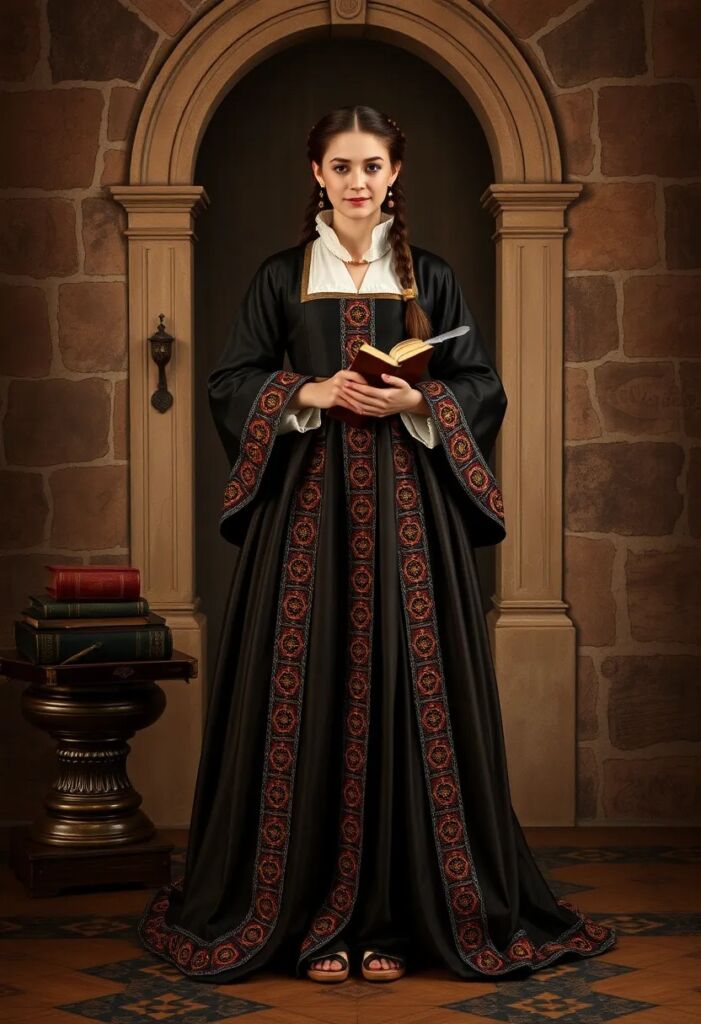
A Renaissance scholar was regarded as a person of great erudition and respect. Choosing a gown made of dark, sturdy fabrics with a touch of embroidery or brocade detail might be appropriate for this role. The scholarly look should be completed with a high collar and a belt with a simple metal buckle.
It is recommended that you carry a small leather-bound book and a quill pen in order to verify your scholar’s identity. You can use these items as props and convey your character’s intelligence and erudition by using them as props.
The court jester
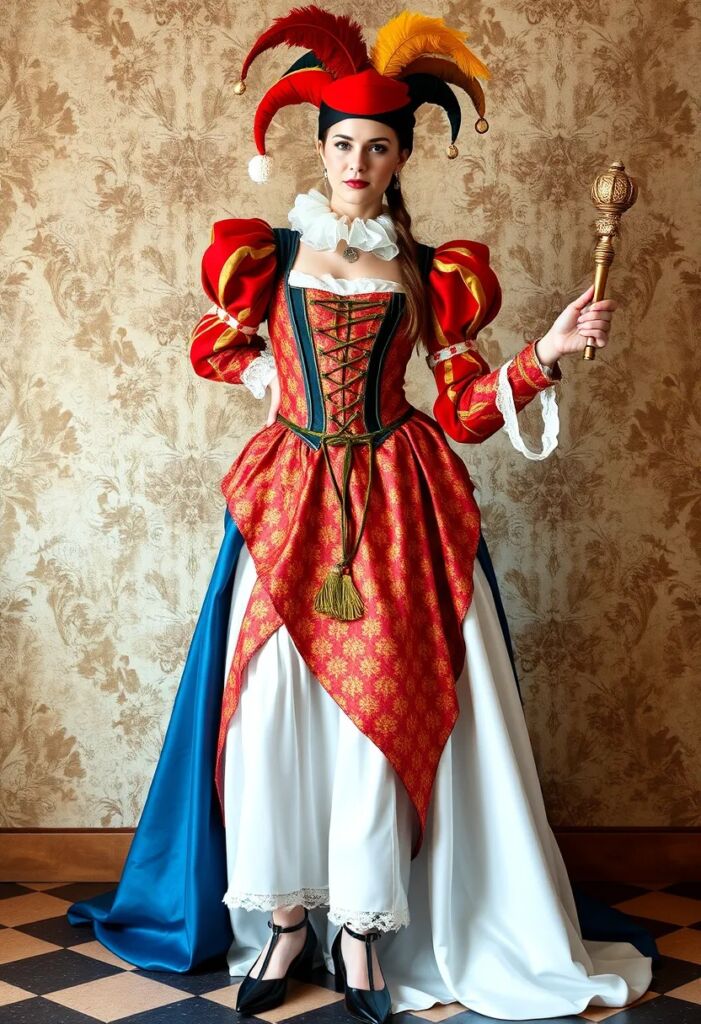
Colourful and sometimes outrageous outfits were worn by the court jesters to amuse the court and catch the attention of the crowd. Make your gown stand out by choosing bold patterns, bright colors, and playful accessories like a feathered hat.
Ensure the jest is represented with appropriate props, such as a fool’s cap, a sceptre, etc. In addition to defining your character, these items will enhance your outfit’s comedy appeal.
The Merchant’s Daughter
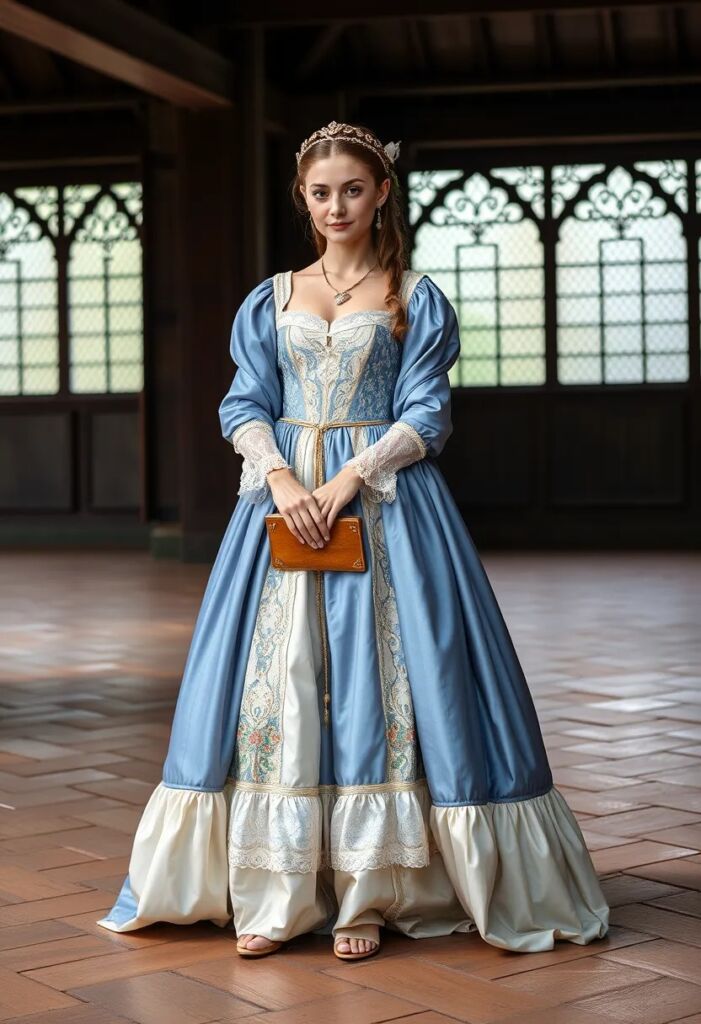
Dressed in garments reflecting her family’s wealth and status, the merchant’s daughter would have reflected her wealth and status. The gown should be made of silk or velvet and feature fine details, such as lace or brocade. It would be perfect to finish off the look with a delicate headdress or a jewelled girdle.
If you want to authenticate your role, carry a book or a fan, items that would have been appropriate for a girl from a merchant family.
The Royal Page
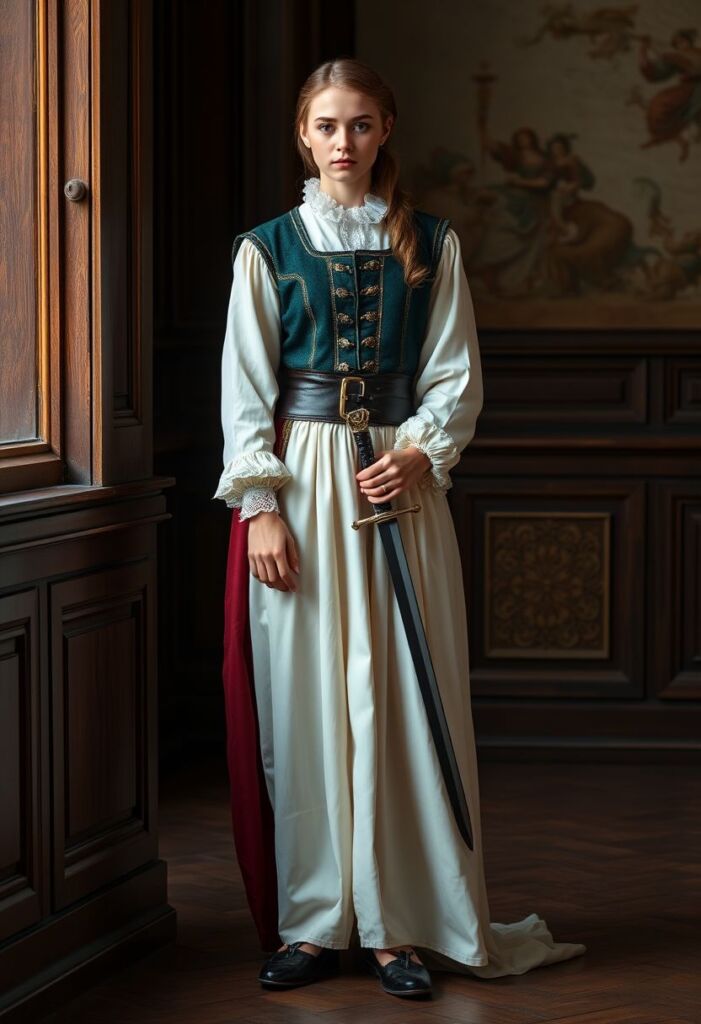
Pages in the court wore a tight style of breeches that reached their knees, a style known as a doublet and hose. In keeping with the livery of the royal household, a belt and cap would complete the look.
It is also appropriate to include a small sword or dagger and a quill pen, items that would have been carried by a page during their duties.
The noblewoman
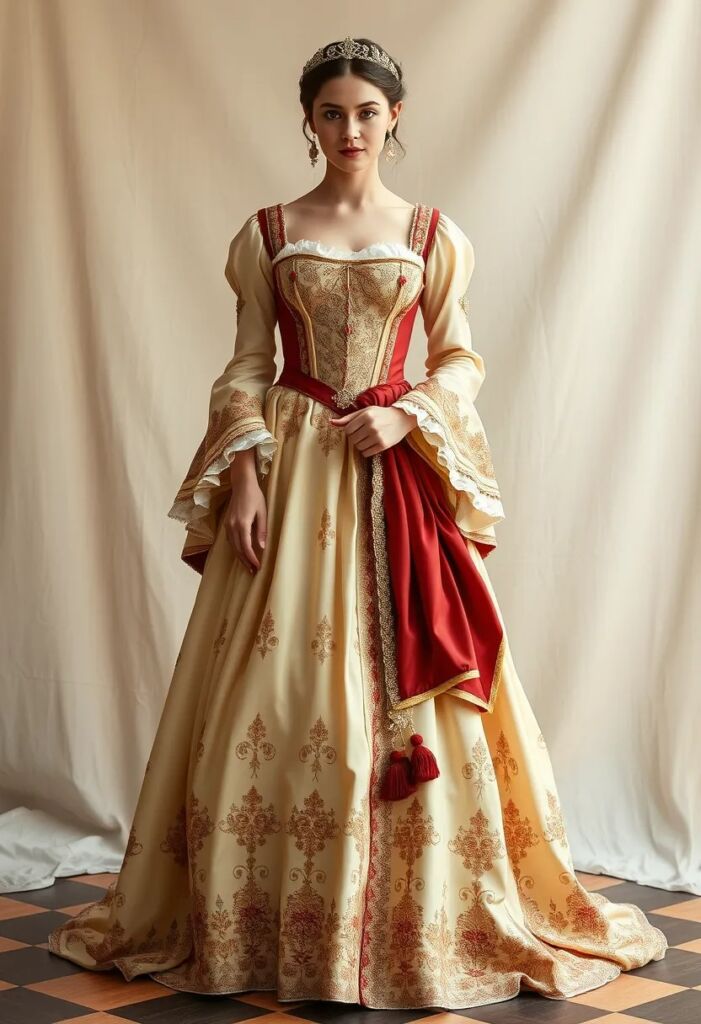
It is safe to assume that the noblewoman wore a gown made of the finest fabrics, intricately embroidered, and embellished with jewels. In addition to a fitted bodice, a full skirt, and possibly a jewelled tiara, the dress should also have a ruffled collar.
You can finish off your noblewoman’s look with a jewelled belt, a jewelled girdle, or a small fan. A nobility woman would have worn these accessories as a symbol of wealth and status.
The Peasant Lady

Peasant ladies wore clothes that were both practical and stylish during the Renaissance. The dress will be made of cotton or linen with a full skirt and fitted bodice. A muted color scheme and minimal accessories are recommended.
The basket or shawl can be used as a means of carrying daily essentials or for providing warmth to a peasant woman.
Conclusion
In addition to reflecting the fashion of the Renaissance period, these Renaissance Dress to Impress Outfits Ideas also reflect the social and cultural context of the era. With every stitch, these outfits will make you feel like a royal, stepping confidently into the past, whether you’re attending a Renaissance fair, a masquerade, or simply looking for historical inspiration for your wardrobe.

